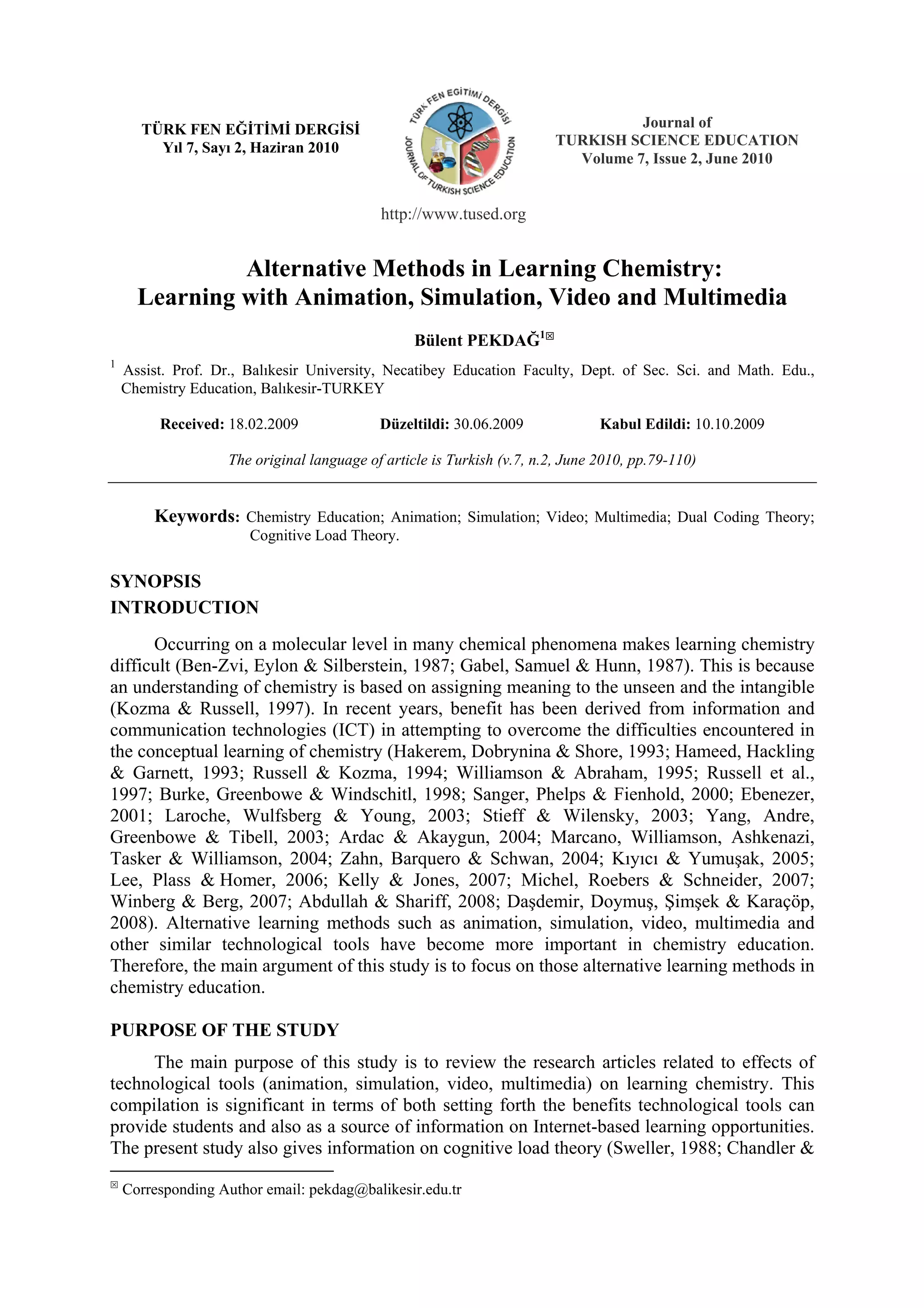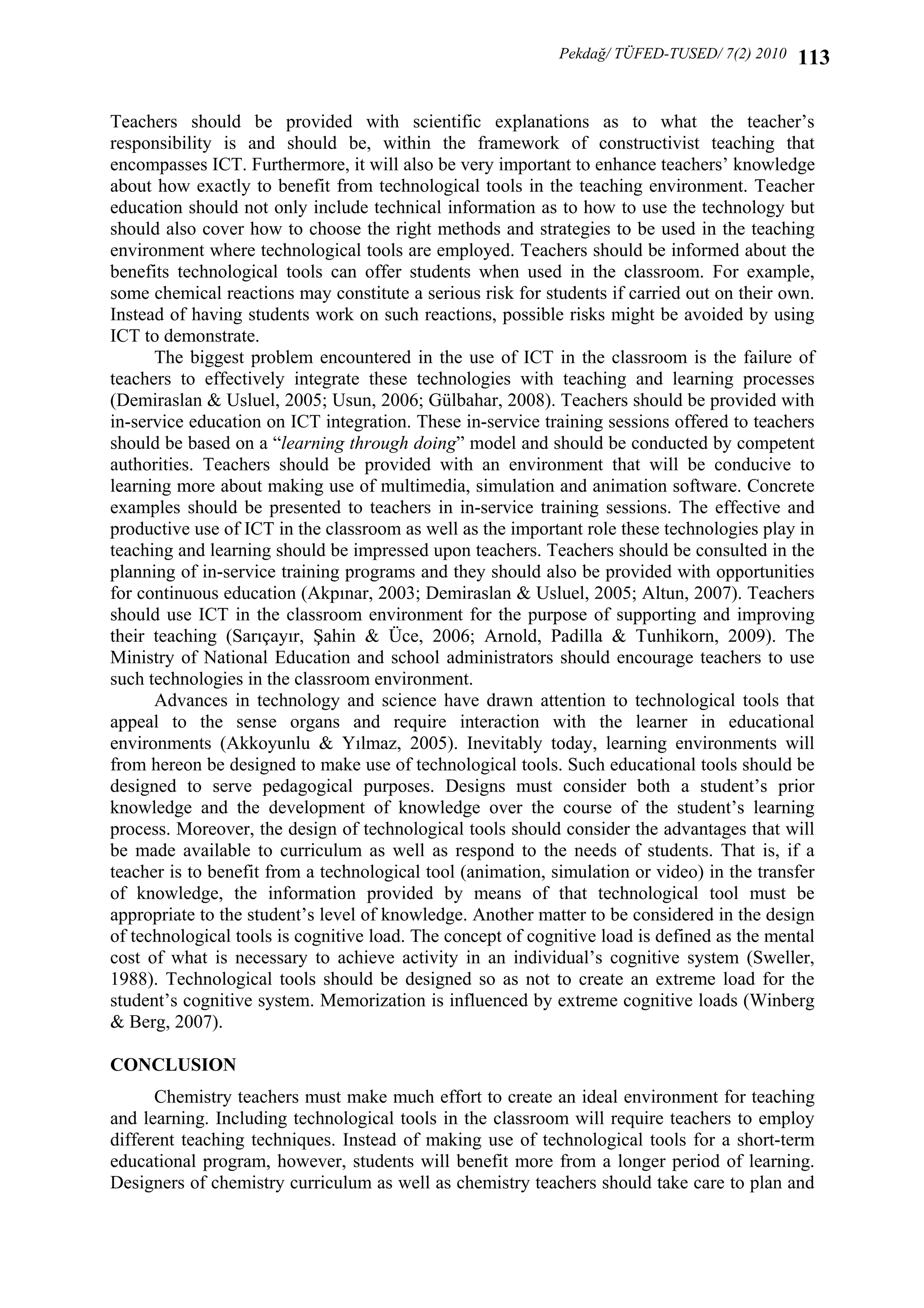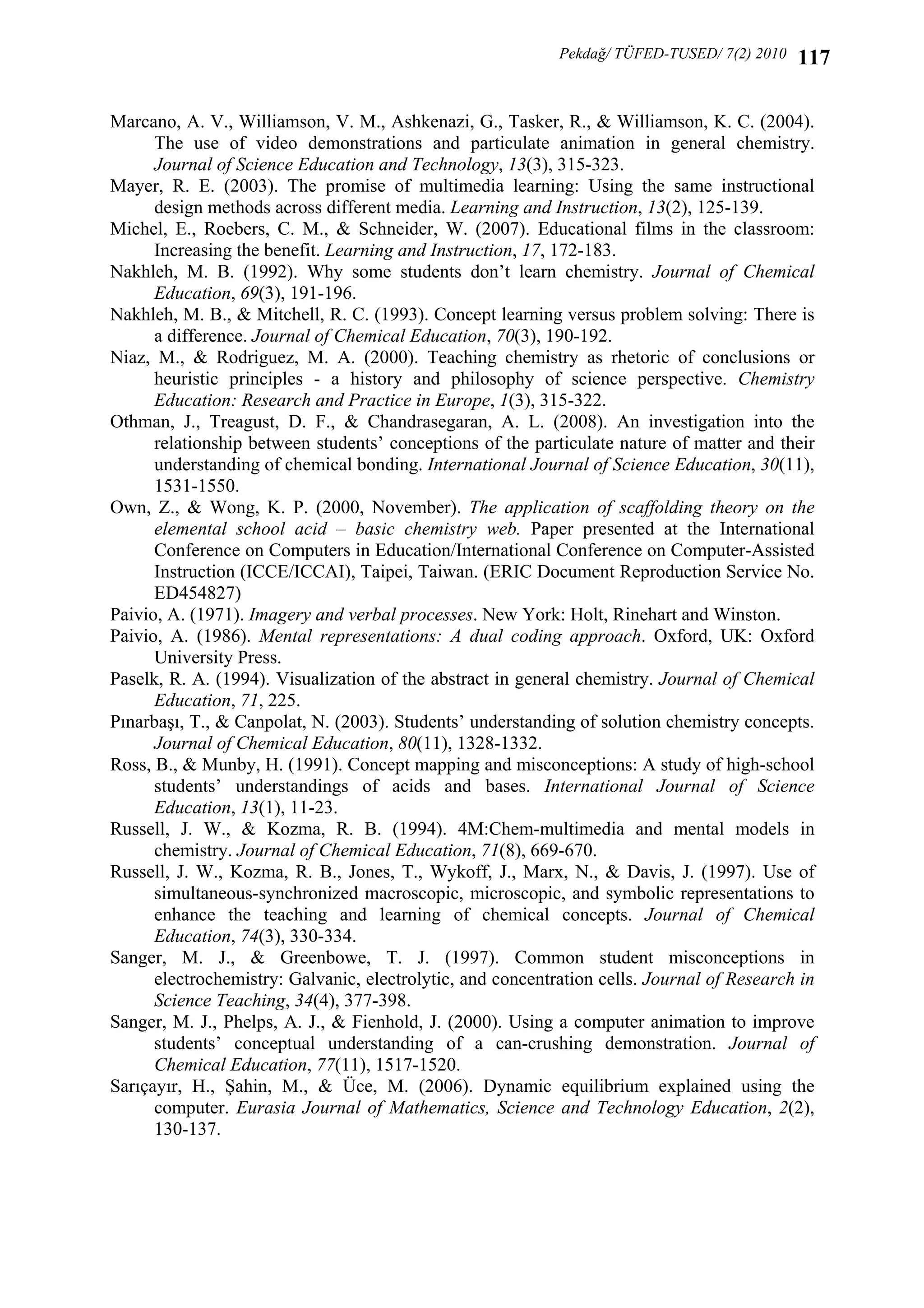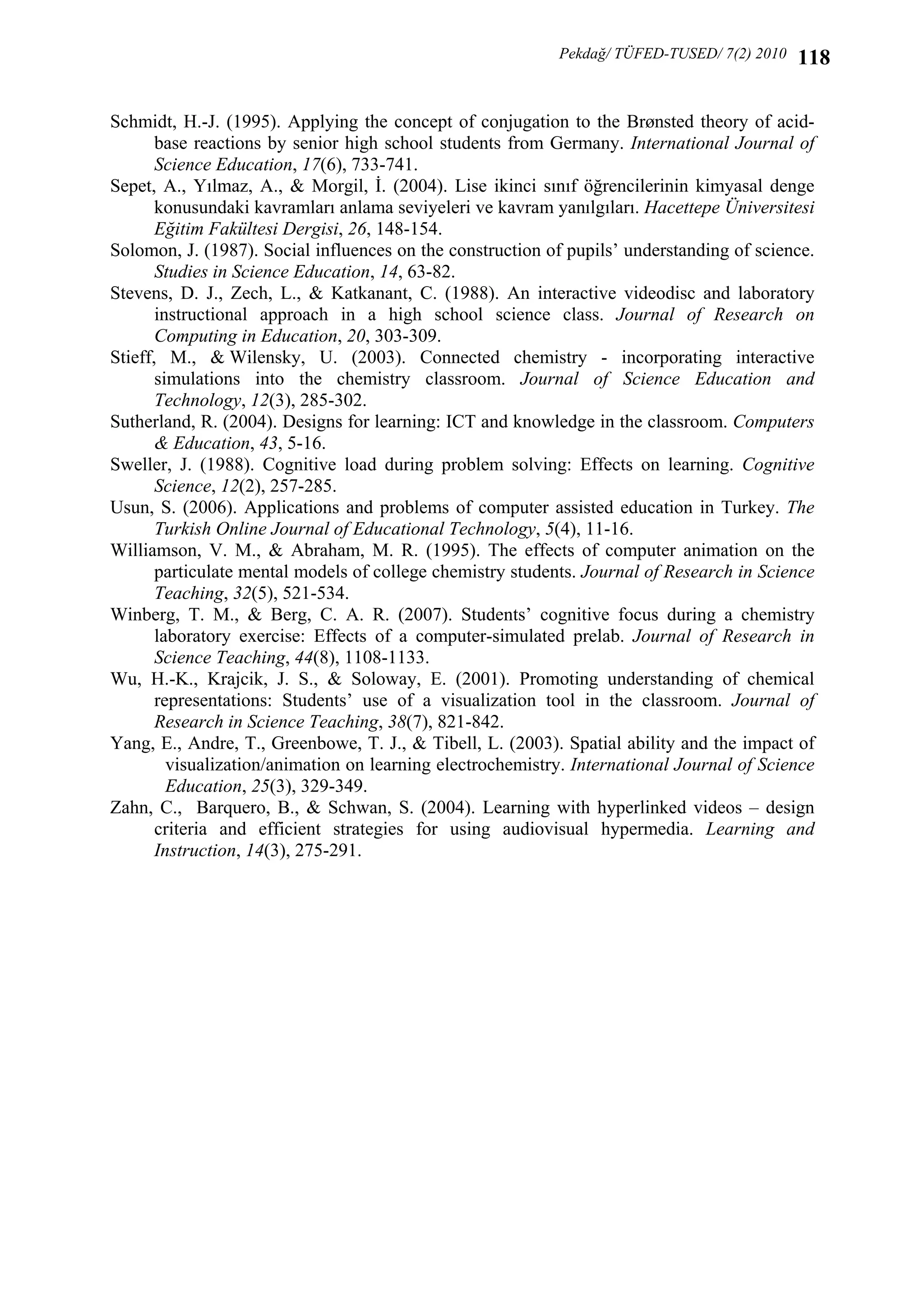This document summarizes a research article about alternative learning methods in chemistry education, specifically the use of animation, simulation, video, and multimedia. It finds that these technologies can help students overcome difficulties in conceptual learning of chemistry by allowing them to visualize chemical phenomena and build mental models. However, these tools must be designed based on cognitive load theory and integrated effectively into the classroom by teachers trained in their educational uses. When used appropriately, information and communication technologies provide significant opportunities to improve chemistry education.







